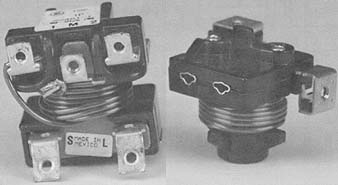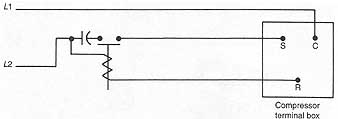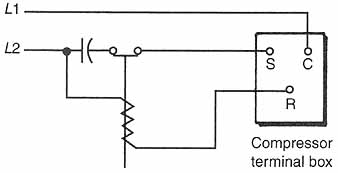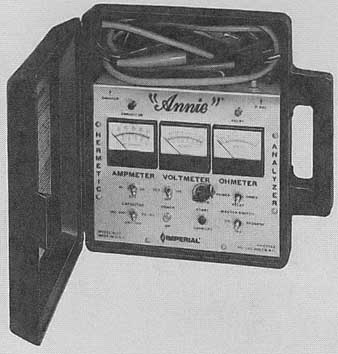AMAZON multi-meters discounts AMAZON oscilloscope discounts
10.1 STARTING RELAYS FOR SINGLE-PHASE MOTORS
Single-phase motors, with the exception of the permanent split-capacitor motor, must have some means of dropping the starting winding (or the starting capacitor in the case of a capacitor-start—capacitor-run motor) out of the circuit. In an open-type motor, this is accomplished simply and easily by a centrifugal switch mounted in the motor. The switch opens the starting circuit once the motor reaches 75% of its full speed. In enclosed motors some type of starting relay must be used.
Basically, three types of starting relays are used in the industry. The first two types—current, and solid-state relays—are generally used on small hermetic motors. The third type, the potential relay, can be adapted to any size motor. Starting relays are essential to the operation of a hermetic compressor motor with the exception of the permanent split-capacitor motor.
Each of the three types of starting relays uses a different method to drop the starting circuit in or out. A potential relay operates on the principle of back electromotive force. The back electromotive force is the amount of voltage produced in the starting winding of a motor. The current or magnetic type of relay operates on the current or amperage that the motor uses to start. The solid-state relay uses a positive temperature coefficient (PTC) material that effectively removes the start winding or component from the circuit. Each of these relays must be correctly sized and matched to the application, except the solid-state relays that can be used over certain horsepower ranges. Each relay is designed to remove the starting circuit when the motor reaches approximately 67% to 75% of full speed.
10.2 CURRENT OR AMPERAGE RELAYS
On all electric motors, the starting amperage is greater than the running amperage because the rotor is at a standstill on startup. The starting amperage of an electric motor is usually stated as the locked rotor amperage (LRA). The locked rotor amperage is the maximum amp draw of the motor when the motor is in a locked rotor condition. The running amperage of an electric motor is usually stated as the full-load amperage ( FLA). Therefore, the ampere draw of the motor is high at the time of the initial startup, but as the motor gains speed, the ampere draw decreases. The cur rent or magnetic relay uses the electrical characteristics of the motor to remove the starting circuit electrically once the motor has established a good running speed, approximately 75% of full speed.
Operation
The current relay is built much like a solenoid, with copper wire wrapped around a steel hollow core holding a steel plunger, as shown in ill 10.1. ill 10.2 shows a cutaway view of a current relay. The contacts of the current relay are normally open, as shown schematically in ill 10.3. The contacts of most current relays are protected by covers that cannot be removed, so it's almost impossible to visually inspect the contacts.

Figr. 10.1 Current relays

Figr. 10.2 Cutaway of current-type relay: Stationary contact,
Guide pin, Stationary contact, Pin connectors, Armature, Spring, Solenoid
coil, Bridging contact

Figr. 10.3 Schematic diagram of a current relay when it's de-energized

Figr. 10.4 Schematic diagram of a current relay when it's energized:
Compressor terminal box

Figr. 10.5 Commercial relay and motor tester
ill 10.4 shows the position of the contacts when the motor is in the starting phase. As the speed of the motor increases, the amperage decreases. When the motor has reached 67% to 75% of its full speed, the amperage will be low enough to cause the magnetic field strength of the relay coil to decrease enough to drop the relay contacts out of the starting circuit.
Troubleshooting
Most current relays are easy to troubleshoot because they have a coil and a set of contacts than can be easily checked with an ohmmeter. The current relay has normally open contacts that are easily checked by turning the relay upside down and checking the contacts with an ohmmeter. If the contacts are good, the relay contacts will read open when the relay is right side up. They will read closed when the relay is inverted. It is imperative when checking a current relay with an ohmmeter that the ohm readings of the contacts be obtained from the correct position of the relay.
The coil of the relay is made of large wire and should have a very low resistance, around 0 to 1 ohm. If the coil reads any higher, more than likely the coil is bad and the relay should be replaced. The current relay and motor starting components should be completely checked to ensure that no other components are bad. ill 10.5 shows a commercial relay tester that can be used to check current relays.